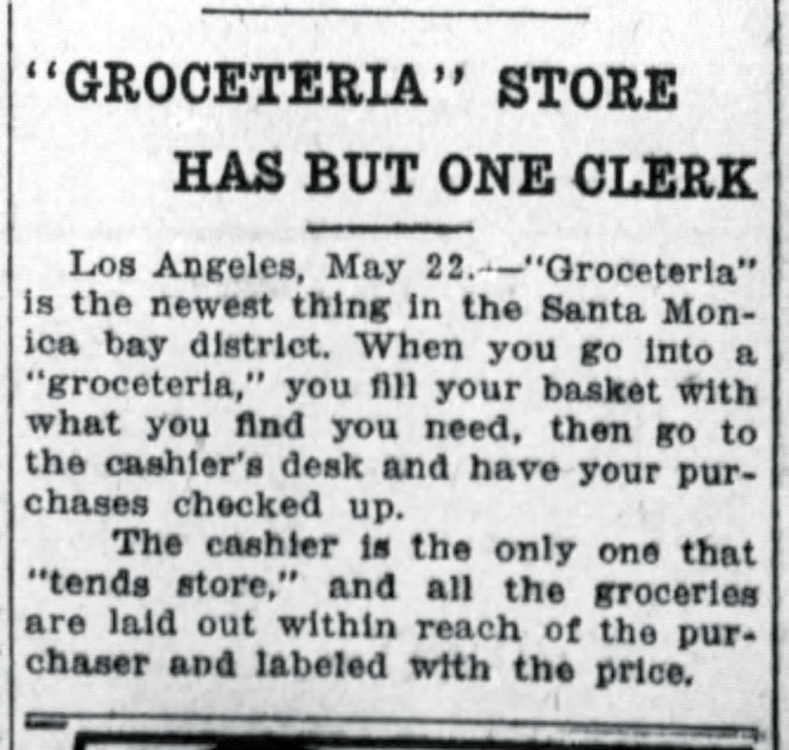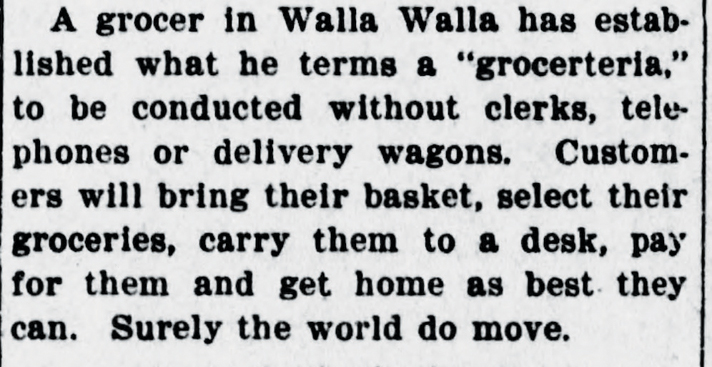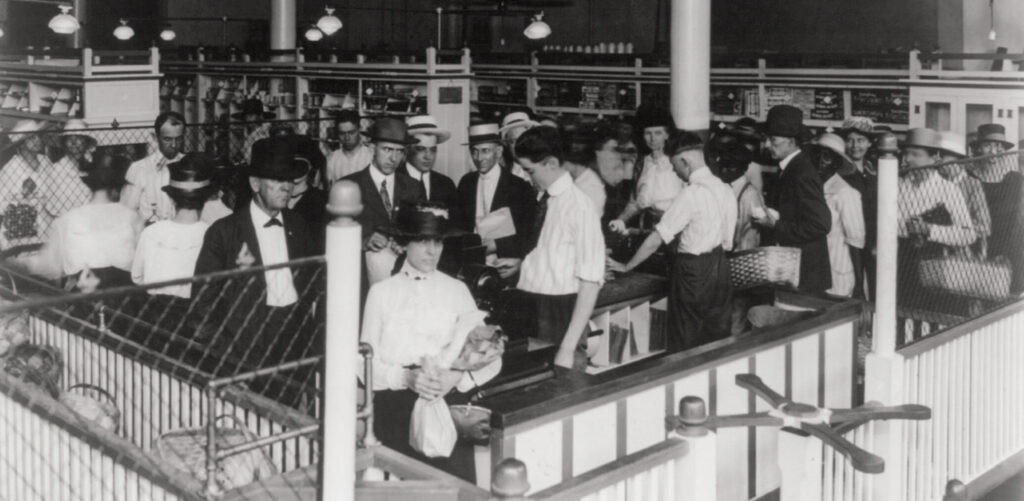I’ve learned to be careful when writing that someone or something was the first of its kind.
As it turns out, the person credited with being the very first in a book or on a historic marker might not have been the first. But somewhere along the way, a reporter or author who didn’t know any better declared someone the first, which has led to the error being accepted over the years.
This brings me to Piggly Wiggly — said to be America’s “first” self-serve grocery store.
Prior to World War I, most grocery stores were fullservice operations. A customer would give a grocery list to a clerk, who would retrieve items from a shelf that only the clerk had access to. If the clerk had four people waiting, the customer had to wait for those four people to be served before the clerk got to them.
Also, most grocery stores extended credit to their customers, which mean they bought groceries with an IOU and paid their bills at the end of the month or season.
In September 1916, Clarence Saunders opened a grocery store at 79 Jefferson Ave. in Memphis and called it Piggly Wiggly. From the start, it was a self-serve operation. Each customer would get a basket and walk around, up and down the aisles and retrieve items as they went.
Piggly Wiggly also operated on a cash-only basis.
Saunders built another, then another, then expanded to other cities, and the next thing you know, Piggly Wiggly was a huge chain.
Today, Saunders is credited as the “inventor” of the selfserve grocery. The Piggly Wiggly store at 79 Jefferson Ave. has been described as America’s “first self-serve grocery store” on the state historic marker and in numerous books and articles, including Smithsonian magazine. (If you don’t believe me, google it.)
But Piggly Wiggly wasn’t even close to being the first self-serve grocery store in the U.S.
According to the Olympia, Washington, newspaper published on June 6, 1913, a man in Walla Walla, Washington, had opened a self-service grocery store there that he called a “grocerteria.” At the store, “customers will bring their basket, select their groceries, carry them to a desk, pay for them and get home as best they can.”

Six months later, in January 1914, a man named M.W. Roberts opened a self-serve grocery store in Tucson, Arizona. “The goods will be arranged on shelves by which an aisle passes,” the Tucson Sun reported. “This aisle terminates at the cashier’s desk, where the customer pays for the goods in his or her basket.” Roberts soon built a second, and then a third.
In April 1915, J.R. Newberry opened three self-serve grocery stores in Riverside, California. Within a couple of months, other entrepreneurs opened them in Pomona, Santa Monica and Los Angeles.
Self-serve grocery stories were soon being written about as far away as Michigan, Florida and Illinois. “There are no grocery clerks, no delivery wagons, and the business is conducted by two people alone, a cashier and a floor walker,” an Illinois newspaper reported on June 10, 1915. “The public help themselves to whatever they care to purchase, walk up to the cashier’s desk and pay for the same.”
All the articles written about self-serve grocery stores in 1914, 1915 and 1916 emphasize the same things: How the customer gets a basket upon entering, walks up and down the aisles, helps themselves and pays as they exit. The only thing that differs from the articles is the spelling of the concept: Some newspapers called them grocerterias, and some dubbed them groceterias (without the R).
In June 1916, a national trade publication published an article headlined “How to Run a Groceteria?” It described the self-serve grocery store in detail and described the success that D.E. Stanton of Santa Monica was having with the concept. “We make little effort at salesmanship,” Stanton said. “We find it is more economical to stock everything people want and let them choose for themselves.”
The article went on to address potential drawbacks to the self-serve stores — most notably, theft.
By this time, self-serve groceries were being opened in Portland, Oregon; Bakersfield, California; and Fort Scott, Kansas.
It was about this time that ads in the Memphis newspaper announced the planned opening of Clarence Saunders’ first Piggly Wiggly store. “The Piggly Wiggly self-serving system is the scientific answer to the plea for a narrower margin between the producer and the consumer,” a Piggly Wiggly ad stated in the Memphis Commercial Appeal on Sept. 4, 1916 — about a week before the store’s grand opening.

So why does Clarence Saunders get credit for inventing a retail concept that was already spreading across the country?
Two reasons:
The first is because he built the nation’s first large self-serve grocery chain. Clarence Saunders’ name would not be in any history books if, like Mr. Roberts of Tucson and Mr. Stanton of Santa Monica, he’d been content with a small number of stores. The reason we know about Saunders is that he built store after store in market after market. He did this by selling stock — first in Memphis, then in the various markets into which he expanded and, finally, at the New York Stock Exchange.
Thanks to corporate investors, there were 1,300 Piggly Wiggly stores by 1922 — about half of which were owned by the company and the remainder by franchisees. Even though grocery stores weren’t nearly as big then as they are now, this is a staggering number.
The other reason Saunders gets credit for inventing the self-serve grocery store is that he filed a patent. In fact, Saunders was granted several patents — including one for the design of a self-serve grocery store (in 1917), one for the way Piggly Wiggly tagged prices onto items (in 1918) and one for giving shoppers a printed receipt (in 1919).
If one defines the inventor of something as the person who received a patent, Saunders is the inventor of the selfserve grocery store. But I don’t think that’s what the word “inventor” means. If we define “inventor” as the person who received a patent, we need to revise what we say about Benjamin Franklin. Franklin invented the lightning rod, bifocals, swimming fins and a stove now named for him. Franklin never filed a patent for anything he invented, but it doesn’t stop us from saying he invented these things.

Here’s my conclusion: It is correct to say that Piggly Wiggly was the first large self-serve grocery store chain in the United States. But it is absolutely wrong to say Piggly Wiggly was America’s first self-serve grocery store or that Clarence Saunders invented the concept. We need to start correcting this error in books and on historic markers.



